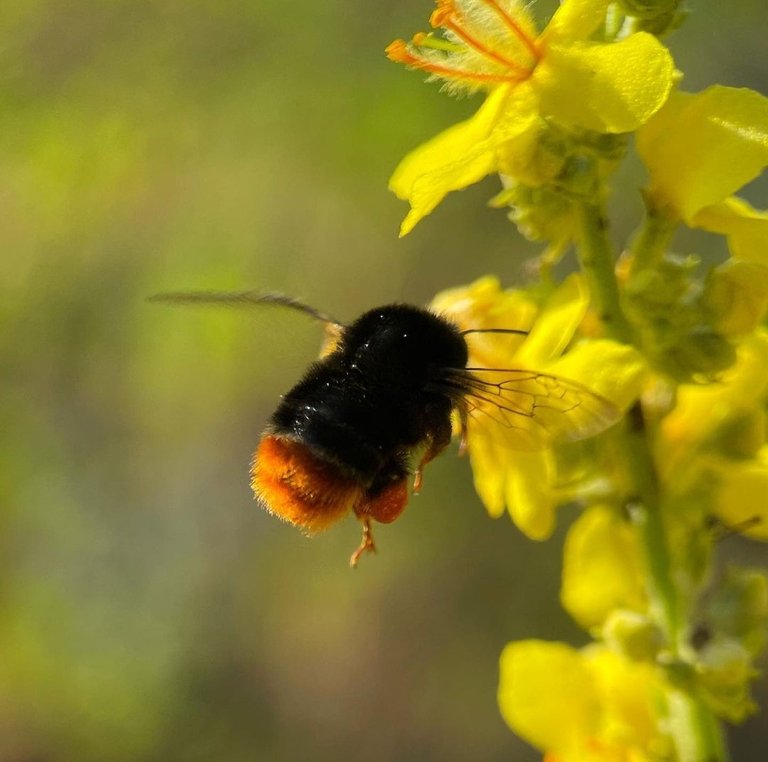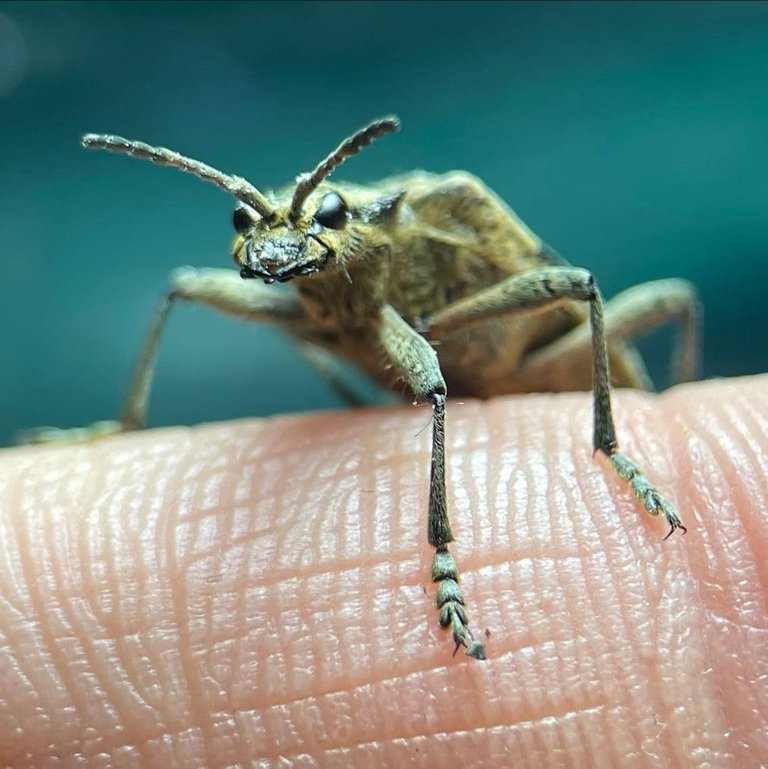
Stone bumblebee (Bombus lapidaries).
It belongs to the bee family (Apidae), which has more than 5,000 species.
Body length of females 2-2.3 cm, workers 1.2-1.6 cm, males 1.4-1.6 cm.
Found on forest edges, gardens, grassy meadows.
Nests are built underground, with stones, abandoned burrows of rodents. Nests can include up to 300-400 bumblebees. In autumn, everyone in the nest dies, except the female (uterus), which overwinters in winter and flies in the spring in search of food and a place for a new nest. She flies above the ground, flying from place to place, from the outside it may seem that she is nervous, zigzags and rushes somewhere.
She is in a hurry to find a place to nest, so that competitors do not understand the best. After finding and arranging a home, it forms a lump of perga in its center and covers it with wax and lays 16 eggs inside. In a few days the larvae are born, which feed on pergo, in 2 weeks pupate, and the uterus forms another clump and lays up to 10 more eggs. In about 2 weeks, the first workers come out to help her with future generations. When the number of colonies reaches 100 individuals, the uterus stops flying and is only engaged in laying eggs. Towards the end of the summer, the female founder lays eggs from which females and males emerge. Males mate after leaving the nest, then die, and fertilized females go to winter. Fly from April to September.
They feed on nectar and pollen, prefer plants of the families Labiatae, Compositae, legumes, Rosaceae.


Relatively recently, about a couple of weeks ago, this handsome man settled in our house. It is not clear where he came from, but most likely from the wood with which we heat the stove. It is no longer possible to let him out, because it is winter and he will not have time to hide there to spend the winter, so while he lives with us, we hope that he will survive the winter normally, and in the spring we will release him.
In the photo, Rhagium ribis, or Ragium inquisitor.
It belongs to the family of mustaches (Cerambycidae), which numbers about 26 thousand. species. Body length 1.4-2 cm.
The female lays eggs in the cracks of the bark, sometimes in groups of several. During its lifetime, the female can lay from 49 to 120 eggs. After 14-20 days, a larva emerges from the eggs, which burrows into the bark, making moves there. They live only in the bark, without damaging the wood. The larva winters, and in the spring continues to make moves again, at the end of summer builds a cradle, covering it on the sides with fibrous drilling flour (which is formed after making moves in the bark) and pupates. The cradle is up to 2.5 cm long and 1.5-1.6 cm wide. The thickness of the layer of drilling flour around the cradle is up to 1.8 cm. Adult beetles appear in August-September, after which they overwinter and reproduce in summer.
Inhabit coniferous forests. The larvae inhabit withering or felled trees and stumps. The cycle of development from egg to adult lasts a year, the life expectancy of an adult is also one year. Therefore, the total lifespan of this beetle (taking into account the mask of the stage) is 2 years. Adults feed on pollen, tree leaves and young branches. The flight of beetles from May to July.